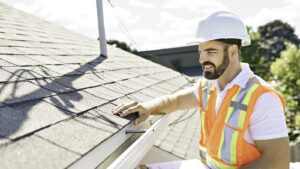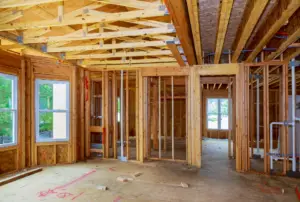Owning a home is a significant investment, and ensuring its long-term stability is crucial for the well-being of your family and the value of your property. Regular building and pest inspections are one of the most effective ways to safeguard your home. In this blog, we will delve into the importance of these and building pest inspections, and how they contribute to your home’s overall health and stability.

The Importance of Building Inspections
Building inspections play a crucial role in ensuring structures’ safety, functionality, and compliance with established regulations and standards. Whether it’s a residential property, commercial building, or industrial facility, regular inspections are essential for several reasons:
Safety Assurance:
Building inspections help identify and report potential safety hazards such as structural weaknesses, faulty electrical systems, gas leaks, and other issues that could threaten occupants.
Structural Integrity:
Inspections assess and inspect the structural integrity of a whole building and pest inspection, identifying any signs of damage or deterioration. This is vital for preventing collapses or other structural failures.
Compliance with Codes and Regulations:
Buildings must adhere to local building codes and regulations to meet minimum safety and construction standards. Inspections help verify building inspector clients’ compliance with these standards.
Property Value:
Regular inspections can help maintain or increase the value of a property. Identifying and addressing issues promptly prevents them from escalating and causing more significant problems that could affect property value.
Energy Efficiency:
Inspections can highlight areas where energy efficiency improvements can be made. This is beneficial for the environment and can lead to cost savings for the property owner in terms of energy bills.
Prevention of Future Problems:
Identifying and addressing potential issues early on can prevent more extensive and expensive problems in the future. This proactive approach can save both time and money.
Legal Compliance:
Local authorities often inspect and require building inspections to ensure that properties comply with zoning laws, land use regulations, and other legal requirements.
Transaction Support:
When buying or selling a property, inspections provide valuable information about the condition of the building. Sellers can make necessary repairs, and buyers can make an informed decision or decisions pre purchase building based on the inspection report.
Insurance Requirements:
Some insurance companies may require a building inspection before providing coverage. This assesses risks and ensures that the property meets specific safety standards.
Health and Habitability:
Inspections consider factors such as ventilation services, sanitation services, and overall habitability. This is crucial for ensuring the well-being of occupants.
Maintenance Planning:
Inspection reports can serve as a roadmap for project and for maintenance and repairs. Property owners can prioritize and plan for necessary improvements based on the inspector’ findings.
The Role of Pest Inspections:
Pest inspections are crucial in various sectors, primarily real estate and property management. These inspections are conducted to assess the presence of pests, such as termites, rodents, insects, and other destructive organisms, within a property. Here are some critical aspects of building pest inspection and the role of pest inspections:
Property Assessment:
- Pest inspections are often part of the due diligence process when buying or selling a property. Buyers want to ensure that the property they are interested in is free from pest infestations that could cause structural damage or health hazards.
Prevention of Property Damage:
- Certain pests, such as termites, can cause significant damage to the structure of a building. Pest inspections help identify any existing infestations or potential risks, allowing property owners to take preventive measures before the damage becomes extensive.
Financial Protection:
- Identifying and addressing pest issues early on can save property owners substantial money. The cost of repairing damage caused by pests can be high, so investing in a pest inspection can be a cost-effective strategy to protect the value of a property.
Health and Safety Concerns:
- Some pests, like rodents and certain insects, can pose health risks to property occupants. Pest inspections help ensure that living spaces are free from problems that could transmit diseases or cause allergic reactions.
Compliance with Regulations:
- In some regions, regulations and building codes require property owners to address pest infestations promptly. Pest inspections can help ensure compliance with these regulations, avoiding potential legal issues.
Insurance Requirements:
- Some insurance providers may require a pest inspection before issuing a policy, especially in areas prone to certain pests. This is because standard insurance policies may not cover pest-related damage, and identifying and addressing issues upfront can be a condition for coverage.
Peace of Mind:
- Knowing that a property has undergone a pest inspection and is free from infestations provides peace of mind for homeowners and property buyers. It eliminates the worry of discovering hidden pest issues after purchasing a property.
Timely Detection:
- Regular pest inspections can detect problems early, allowing for prompt intervention. Early detection is crucial in controlling and eradicating pests before they cause extensive damage.
The Frequency of Inspections:
While the necessity for inspections may vary depending on factors such as location, climate, and the age of your home, experts generally recommend annual assessments. Older homes or areas prone to specific issues may require more frequent inspections.
Frequently Asked Questions
Why are regular building inspections necessary for home maintenance?
Regular building inspections help identify potential issues early on, allowing homeowners to address them before they escalate. This can prevent costly repairs and ensure the long-term stability of your home.
What is the recommended frequency for building inspections?
It’s generally advisable to conduct a building inspection annually. However, if your area is prone to certain environmental risk factors or if you notice specific concerns, more thorough inspection frequent checks may be necessary.
How do building inspections contribute to long-term stability?
Building inspections detect structural issues, water damage, and other potential threats to a home’s stability. Addressing these problems promptly can prevent structural deterioration and ensure the overall longevity of the property.
What role do pest inspections play in home safeguarding?
Pest inspections are crucial for building pest inspection reports and identifying and mitigating infestations that could compromise the integrity of your home. Termites and other pests can cause extensive damage if not addressed promptly.
How often should pest inspections be conducted?
Pest inspections are typically recommended on an annual basis. However, if you live in an area prone to specific pests or have had issues in the past, more frequent inspections may be necessary.
What are the signs that indicate the need for a building inspection?
Signs include cracks in walls and roof, sagging floors, water stains, and unusual odours. Additionally, scheduling an inspection is advisable if you notice changes in your home’s structure or have experienced natural disasters.
Can building inspections uncover hidden issues?
Yes, professional building inspections often reveal hidden structural or safety issues that may not be apparent during a casual review. Professionals use specialized tools, knowledge and techniques to identify such concerns.
How long does a typical building inspection take?
The duration of a building inspection depends on the size and complexity of the property. On average, it may take a few hours. Larger or more intricate homes may require more time.
Conclusion:
Regular building and pest inspections are not just an added expense; they are a proactive investment in your home’s long-term stability and safety. Early detection of issues, compliance with regulations, and preventative building and pest inspection and control measures contribute to a home’s overall well-being. By prioritizing these inspections, homeowners can enjoy peace of mind, protect their investments, and ensure a stable and secure living environment for years to come. Remember, a small investment today can save you from significant headaches tomorrow.











